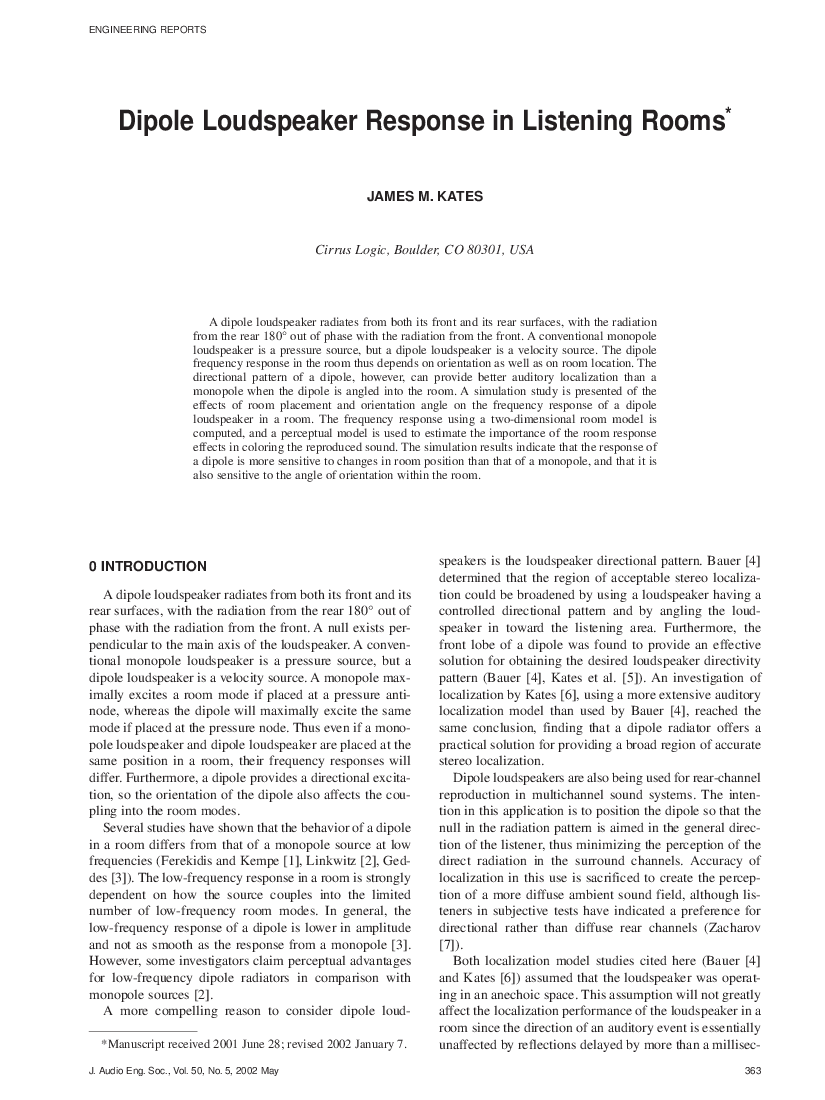Home / Publications / E-library page
You are currently logged in as an
Institutional Subscriber.
If you would like to logout,
please click on the button below.
Home / Publications / E-library page
Only AES members and Institutional Journal Subscribers can download
A dipole loudspeaker radiates from both its front and its rear surfaces, with the radiation from the rear 180° out of phase with the radiation from the front. A conventional monopole loudspeaker is a pressure source, but a dipole loudspeaker is a velocity source. The dipole frequency response in the room thus depends on orientation as well as on room location. The directional pattern of a dipole, however, can provide better auditory localization than a monopole when the dipole is angled into the room. A simulation study is presented of the effects of room placement and orientation angle on the frequency response of a dipole loudspeaker in a room. The frequency response using a two-dimensional room model is computed, and a perceptual model is used to estimate the importance of the room response effects in coloring the reproduced sound. The simulation results indicate that the response of a dipole is more sensitive to changes in room position than that of a monopole, and that it is also sensitive to the angle of orientation within the room.
Author (s): Kates, James M.
Affiliation:
Cirrus Logic, Boulder, CO
(See document for exact affiliation information.)
Publication Date:
2002-05-06
Import into BibTeX
Permalink: https://aes2.org/publications/elibrary-page/?id=11078
(198KB)
Click to purchase paper as a non-member or login as an AES member. If your company or school subscribes to the E-Library then switch to the institutional version. If you are not an AES member Join the AES. If you need to check your member status, login to the Member Portal.

Kates, James M.; 2002; Dipole Loudspeaker Response in Listening Rooms [PDF]; Cirrus Logic, Boulder, CO; Paper ; Available from: https://aes2.org/publications/elibrary-page/?id=11078
Kates, James M.; Dipole Loudspeaker Response in Listening Rooms [PDF]; Cirrus Logic, Boulder, CO; Paper ; 2002 Available: https://aes2.org/publications/elibrary-page/?id=11078